
The Wright brothers, Orville Wright and Wilbur Wright, were American aviation pioneers generally credited with inventing, building, and flying the world's first successful airplane. They made the first controlled, sustained flight of an engine-powered, heavier-than-air aircraft with the Wright Flyer on December 17, 1903, four miles south of Kitty Hawk, North Carolina, at what is now known as Kill Devil Hills. In 1904 the Wright brothers developed the Wright Flyer II, which made longer-duration flights including the first circle, followed in 1905 by the first truly practical fixed-wing aircraft, the Wright Flyer III.

Airplane inventors Wilbur and Orville Wright are famed for making the first controlled, powered, heavier-than-air flights on 17 December 1903 at Kitty Hawk, North Carolina. Lesser-known are other flights of theirs which played an important role at the dawn of aviation history. In 1909 Wilbur was invited by the Hudson-Fulton Celebration Committee to make paid exhibition flights to help mark 300 years of New York history, including Henry Hudson discovering Manhattan and Robert Fulton starting a successful commercial steamboat service on the Hudson River. The committee wanted the Wrights to demonstrate flights over the water around New York City. Orville was making flights for customers in Germany, so Wilbur, who had just finished training U.S. Army pilots, accepted the job.
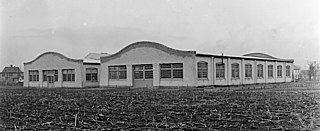
The Wright Company was the commercial aviation business venture of the Wright Brothers, established by them on November 22, 1909, in conjunction with several prominent industrialists from New York and Detroit with the intention of capitalizing on their invention of the practical airplane. The company maintained its headquarters office in New York City and built its factory in Dayton, Ohio.
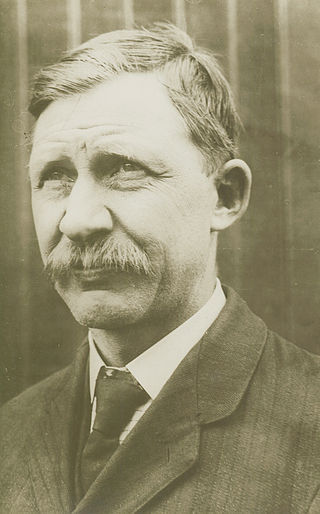
Charles Edward Taylor was an American inventor, mechanic and machinist. He built the first aircraft engine used by the Wright brothers in the Wright Flyer, and was a vital contributor of mechanical skills in the building and maintaining of early Wright engines and airplanes.
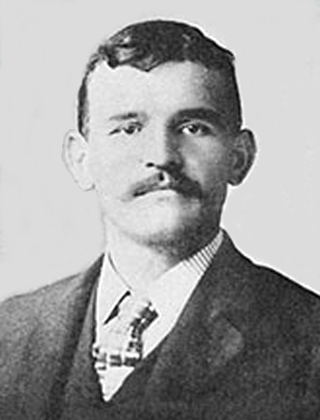
Gustave Albin Whitehead was an aviation pioneer who emigrated from Germany to the United States where he designed and built gliders, flying machines, and engines between 1897 and 1915. Controversy surrounds published accounts and Whitehead's own claims that he flew a powered machine successfully several times in 1901 and 1902, predating the first flights by the Wright Brothers in 1903.
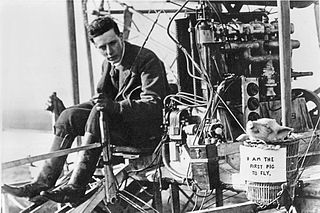
This is a list of aviation-related events from 1909:
This is a list of aviation-related events from 1908:
This is a list of aviation-related events from 1905:

David Gaub McCullough was an American popular historian. He was a two-time winner of the Pulitzer Prize and the National Book Award. In 2006, he was given the Presidential Medal of Freedom, the United States' highest civilian award.
The Wright Flyer III was the third powered aircraft by the Wright Brothers, built during the winter of 1904–05. Orville Wright made the first flight with it on June 23, 1905. The Flyer III had an airframe of spruce construction with a wing camber of 1-in-20 as used in 1903, rather than the less effective 1-in-25 used in 1904. The new machine was equipped with the engine and other hardware from the scrapped Flyer II and, after major modifications, achieved much greater performance than Flyers I and II.

The Wright Model A was an early aircraft produced by the Wright Brothers in the United States beginning in 1906. It was a development of their Flyer III airplane of 1905. The Wrights built about seven Model As in their bicycle shop during the period 1906–1907, in which they did no flying. One of these was shipped to Le Havre in 1907 in order to demonstrate it to the French. The Model A had a 35-horsepower (26 kW) engine and seating for two with a new control arrangement. Otherwise, it was identical to the 1905 airplane. The Model A was the first aircraft that they offered for sale, and the first aircraft design to enter serial production anywhere in the world. Apart from the seven machines the Wrights built themselves in 1906–1907, they sold licences for production in Europe with the largest number of Model A's actually being produced in Germany by Flugmaschine Wright GmbH, which built about 60 examples.

The Wright brothers designed, built and flew a series of three manned gliders in 1900–1902 as they worked towards achieving powered flight. They also made preliminary tests with a kite in 1899. In 1911 Orville conducted tests with a much more sophisticated glider. Neither the kite nor any of the gliders were preserved, but replicas of all have been built.
Harry Aubrey Toulmin Sr. was the American lawyer located in Springfield, Ohio, who wrote the "flying machine" patent application that resulted in the patent granted to Dayton inventors Wilbur and Orville Wright on May 22, 1906.

The Curtiss Flying School was started by Glenn Curtiss to compete against the Wright Flying School of the Wright brothers. The first example was located in San Diego, California.

Katharine Wright Haskell was the younger sister of aviation pioneers Wilbur and Orville Wright. She worked closely with her brothers, managing their bicycle shop in Dayton, Ohio, when they were away; acting as their right-hand woman and general factotum in Europe; assisting with their voluminous correspondence and business affairs; and providing a sounding board for their far-ranging ideas. She pursued a professional career as a high school teacher in Dayton, at a time when few middle-class American women worked outside the home, and went on to become an international celebrity in her own right. A significant figure in the early-twentieth-century women's movement, she worked actively on behalf of woman suffrage in Ohio and served as the third female trustee of Oberlin College.
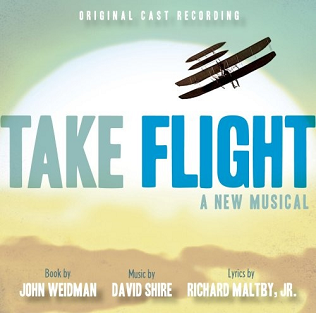
Take Flight is a musical with book by John Weidman, music by David Shire and lyrics by Richard Maltby, Jr. The musical is inspired by the early history of aviation, interweaving the lives of the Wright Brothers, Charles Lindbergh, Amelia Earhart and her publisher George Putnam, along with such sundry luminaries as Otto Lilienthal, the German "Glider King"; Commander Richard Byrd; French flying aces Nungesser and Coli, and various others.
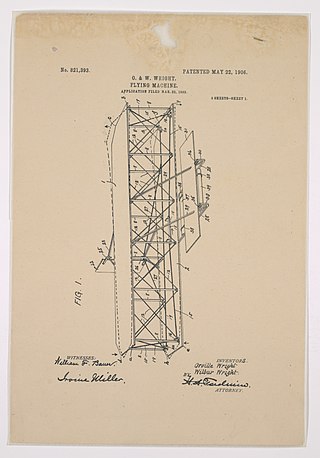
The Wright brothers patent war centers on the patent that the Wright brothers received for their method of airplane flight control. They were two Americans who are widely credited with inventing and building the world's first flyable airplane and making the first controlled, powered, and sustained heavier-than-air human flight on December 17, 1903.
The Wright brothers were American inventors of the airplane, Orville (1871–1948) and Wilbur Wright (1867–1912).
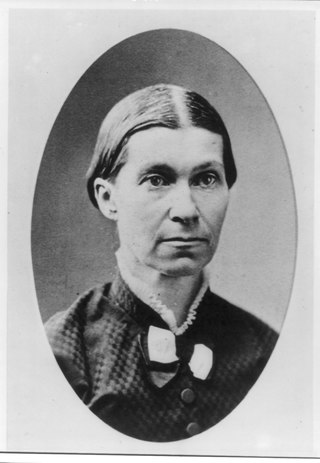
Susan Catherine Koerner Wright was the mother of aviation pioneers Wilbur and Orville Wright, and wife of Milton Wright. She gave birth to seven children, and fostered in them an interest in carpentry and mechanics with her deep skills in those areas.
The Wright Stuff is a 1996 television documentary film about Orville and Wilbur Wright, the brothers who invented the first successful motor-powered airplane. Produced by PBS for The American Experience documentary program, it recounts the lives of the Wright brothers from their early childhood in Ohio with dreams of flight to their subsequent fame after their successful 1908 demonstration in France. The film was written, produced, and directed by Nancy Porter, narrated by Garrison Keillor, and hosted by David McCullough, and was first aired on PBS in the United States on February 12, 1996.














